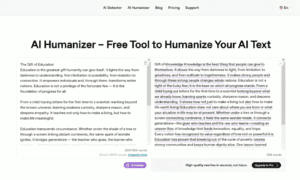The Fourth Industrial Revolution, known as Industry 4.0, has brought about a profound transformation in the business environment. Digital technologies now directly influence production processes, business models, and interactions with customers and suppliers. This new scenario requires companies to adapt quickly to remain competitive, which represents a significant shift, especially for traditional companies that have operated under analog paradigms for decades.
This technological revolution is not limited to large industries or tech startups. It also affects traditional companies, which now face the need to digitize their operations to maintain market presence. Digitalization is no longer an option but a strategic necessity, impacting everything from internal processes to how products and services are delivered to customers.
This article aims to explore how IT infrastructure has evolved in traditional companies in response to Industry 4.0 demands. To this end, it will present an overview of technological transformations, the main challenges faced, and the opportunities available for organizations embracing digital innovation in their operations.
The Rise of Industry 4.0 and the Imperative of Digital Transformation:
Industry 4.0 is characterized by a deep integration of digital technologies such as the Internet of Things (IoT), Artificial Intelligence (AI), cloud computing, and Big Data analytics in production processes and throughout the value chain. These innovations enable companies to optimize operations, gain valuable insights from data, and develop products and services better aligned with market needs. Additive manufacturing, for example, allows for faster and more personalized prototyping, increasing efficiency in new product development.
For traditional companies, implementing these technologies goes beyond merely modernizing old systems. It requires a structural change that involves reconfiguring operational processes and adopting a new organizational culture. Digital transformation demands a new mindset, where innovation is constant, collaboration is valued, and agility in adapting to market changes is essential. This often means abandoning old practices and creating an environment that fosters creativity and acceptance of new approaches.
This transition is not without challenges. The lack of digital skills in some companies, resistance to new ways of working, and the complexity of integrating emerging technologies with legacy systems are common barriers. However, companies that overcome these obstacles can significantly benefit from digital transformation, gaining a competitive edge in the market.
The Evolution of IT Infrastructure:
IT infrastructure has played a central role in the digital transformation of traditional companies, connecting processes, data, and people efficiently and securely. Historically, IT was seen as a cost center focused on operational support and system maintenance. The primary goal was to keep infrastructure stable and ensure that systems functioned properly. However, in the era of Industry 4.0, this perception has changed, and IT is now seen as a source of innovation and competitive advantage.
Cloud computing is one of the main drivers of this paradigm shift. With cloud solutions, companies can access computing resources flexibly and scalably, paying only for what they use. Server virtualization, cloud storage, and cloud-based development platforms provide greater agility for companies to respond to market changes while significantly reducing costs associated with physical infrastructure. This is particularly crucial for traditional companies that need to quickly adapt their operations to remain competitive.
Beyond cloud computing, IoT has opened new possibilities for data collection and utilization. Sensors and smart devices enable real-time process monitoring, collecting valuable data on equipment performance, customer behavior, and operational efficiency. With this information, companies can optimize processes, anticipate failures, and develop products more aligned with consumer needs, transforming how they operate and deliver value.
AI and Big Data Analytics:
Artificial Intelligence (AI) and Big Data analytics are other fundamental pillars of digital transformation in traditional companies. With the ability to analyze vast amounts of data, AI helps companies identify patterns, make predictions, and make more accurate decisions. This directly impacts process improvement, operational efficiency, and the creation of more effective marketing strategies.
Through machine learning algorithms, companies can automate repetitive tasks, freeing up time and resources to focus on higher-value activities. Additionally, predictive analytics based on Big Data provides strategic insights, helping companies anticipate market trends and adjust operations according to future demands. This deep understanding of market and consumer behavior provides a competitive advantage for companies investing in AI.
However, adopting AI also presents challenges. These include the need to develop IT infrastructure capable of handling massive amounts of data generated and processed in real-time. Additionally, companies must ensure data privacy and security, particularly in highly regulated sectors. Effective data management is essential to ensure that obtained insights are reliable and that processes comply with existing regulations.
Challenges and Opportunities:
Digital transformation presents significant challenges for traditional companies, many of which are related to cultural change and the development of new skills. Resistance to change is common, especially among employees accustomed to traditional work methods. Overcoming this barrier requires clear communication of digitalization benefits and employee training to prepare them for new tools and processes.
Additionally, integrating new technologies with legacy systems can be a complex and costly process, requiring detailed planning to avoid operational disruptions. Companies must also address cybersecurity issues, as digitalization increases the attack surface and vulnerability to online threats. Implementing security best practices, such as data encryption and continuous monitoring, becomes essential to protect sensitive information.
On the other hand, the benefits of digital transformation are undeniable. Companies that overcome these challenges can significantly enhance process efficiency, reduce operational costs, and improve the quality of their products and services. Closer customer relationships are another important benefit, as digital technologies allow for a better understanding of customer needs and preferences, enabling more effective personalization of offerings.
Conclusion:
Digital transformation, driven by Industry 4.0, is not just a trend but an essential path for the survival and competitiveness of traditional companies in an increasingly dynamic market. The evolution of IT infrastructure, supported by technologies such as cloud computing, IoT, AI, and Big Data, is redefining how these organizations operate, enabling them to respond more quickly to changes and deliver value to customers innovatively.
However, adopting these technologies goes beyond a simple system update: it requires a shift in mindset, where innovation, adaptability, and collaboration become fundamental principles of organizational culture. Companies that prioritize IT investments, develop digital skills within their teams, and foster openness to change are better prepared to face challenges and seize opportunities arising from digital transformation.
Ultimately, success in the digital age depends on each organization’s ability to integrate new technologies strategically and continuously, using each challenge as an opportunity to innovate and grow. This commitment to modernization and resilience will allow traditional companies to thrive in the Industry 4.0 era, positioning themselves as leaders in a competitive and technology-driven future.
Bibliographic References:
- Kagermann, H., Wahlster, W., & Helbig, J. (2013). Recommendations for implementing the strategic initiative INDUSTRIE 4.0. German Academy of Science and Engineering.
- Schwab, K. (2017). The Fourth Industrial Revolution. World Economic Forum.
- Porter, M. E., & Heppelmann, J. E. (2015). How Smart, Connected Products Are Transforming Companies. Harvard Business Review.
- McKinsey & Company (2020). The State of AI in 2020. McKinsey Global Institute.
- Davenport, T. H., & Ronanki, R. (2018). Artificial Intelligence for the Real World. Harvard Business Review
About the Author:
Thiago Borges Cardoso is an expert in IT Infrastructure Coordinator with 18 years in the field. He has worked in leading IT infrastructure teams, managing large-scale datacenter operations, and optimizing IT environments for global enterprises. His expertise includes VMware, cloud computing, strategic IT planning, and cost management.



































